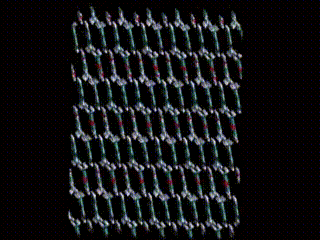Computational chemistry
The ability to predict macroscopic physical properties of a system from a limited amount of molecular information has been a long-term goal in chemistry and engineering, as it reduces the need for expensive and time-consuming experimentation. However, a common characteristic of many of the current computational approaches is the impressive computational cost they require, which difficult their use by common engineers and scientists in personal computers. Thus, the development of simple, fast and reliable methods is an ongoing process.

Molecular dynamics (MD) is perhaps the most promising cost-effective computational technique to study the condensed matter. Although not a “paper and pencil” method, it is a general approach that, based on simple atom-atom pair’s potential calculations, currently allows, to a considerable extent, the interpretation of packing effects in many crystals or the organization of molecules in a solution [1,2].
Two main topics are investigated at the Molecular Energetics group:
i) The development of molecular force fields for ionic liquids (IL), organometalic compounds and organic solid materials, and its use to investigate the structure of solutions [1,3,4];
ii) The study of polymorphism in organic materials (i.e. the ability of one molecule to crystallize in more than one molecular packing) [3,5];
iii) The development of software for preparation of simulations and the analysis of MD results [1,5].
